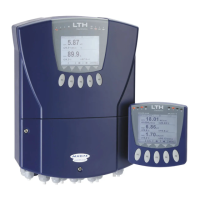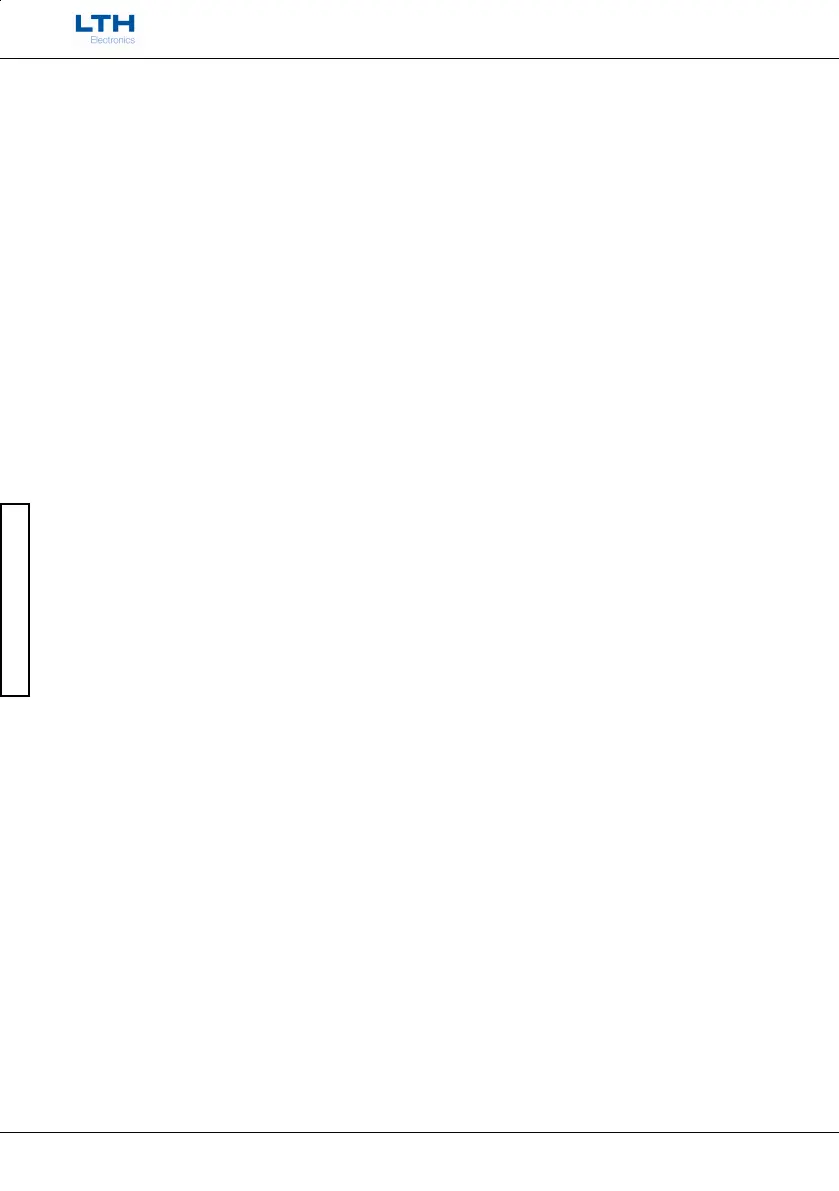Channel Calibration
- 20 -
MXD70 Electrodeless Conductivity
Setup and Operating Guide
Channel Calibration
Calibration
Normal good practices should be observed when calibrating an electrodeless conductivity system.
Four Calibration procedures are provided with the electrodeless conductivity input:
An initial installation loop calibration that matches the sensor, cable and instrument using loop
resistors. This only needs to be performed when the system is commissioned and when a sensor
or cable is changed.
A solution calibration, that will allow the user to fine tune the calibration. Note: The amount of
adjustment is quite small because the factory calibration is accurate and with modern electronics,
drift is very low. If it is found that during a calibration there is insufficient adjustment then it is
probable that there is a problem with either the calibration procedure, or a fault with the
instrument, sensor or cabling.
Temperature measurement adjustment, will allow to fine tune the temperature input in relation
to a known input.
Current output adjustment.
For best results always clean the sensor before making any adjustments.
Calibration of Conductivity Readings
Conductivity measurements are very temperature dependent so it is essential that an understanding
of the complex relationship between conductivity and temperature is understood when calibrations
are made. It is possible to make several different types of calibration.
Calibration with Standard Solutions
This calibration must be carried out under strictly controlled conditions due to the temperature effect
on conductivity measurements and the possibility of contamination of the standard solution. The
advantage of this calibration method is that the sensor and cable are an integral part of the calibration.
LTH strongly recommends a lower limit of 500μS/cm for this type of calibration. Conductivity is a very
sensitive measurement and even trace contamination of the standard solution will be detected, for
example exposing the solution to air will add 1μS/cm to the standard solution due to absorption of
CO
2.
Most standards are made up from a solution of KCl dissolved in high purity water. BS EN 60746-3
provides details of the concentrations of KCl necessary to produce industry standard conductivity
solutions. Ready made solutions are available from LTH with traceable certification if required.
Standard solutions will be supplied with a conductivity value quoted at a reference temperature. This
temperature is the base temperature and the calibration should be performed at that temperature,
with the temperature compensation switched out. Alternatively, the temperature compensation
should be switched on and a temperature slope and base temperature equal to that of the calibration
solution can be used to configure the instrument. For example this would be 1.76%/°C for a KCl
solution between 1000 to 10,000μS/cm. For more details on calculating the slope of a different
solution, refer to Appendix B - Temperature Coefficient (page 31)
Calibration by Comparison with Another Instrument
This can provide the easiest method for in-situ calibrations but has the disadvantage of only being able
to check a single measurement point. As measurements are made by comparison of the readings
taken in the same solution, temperature effects are less critical. However, it is essential that settings for
temperature compensation are the same on both instruments.

